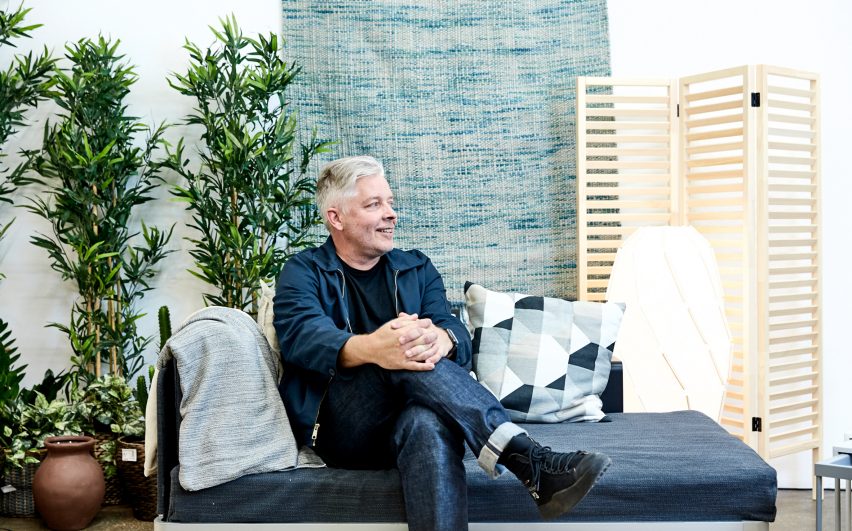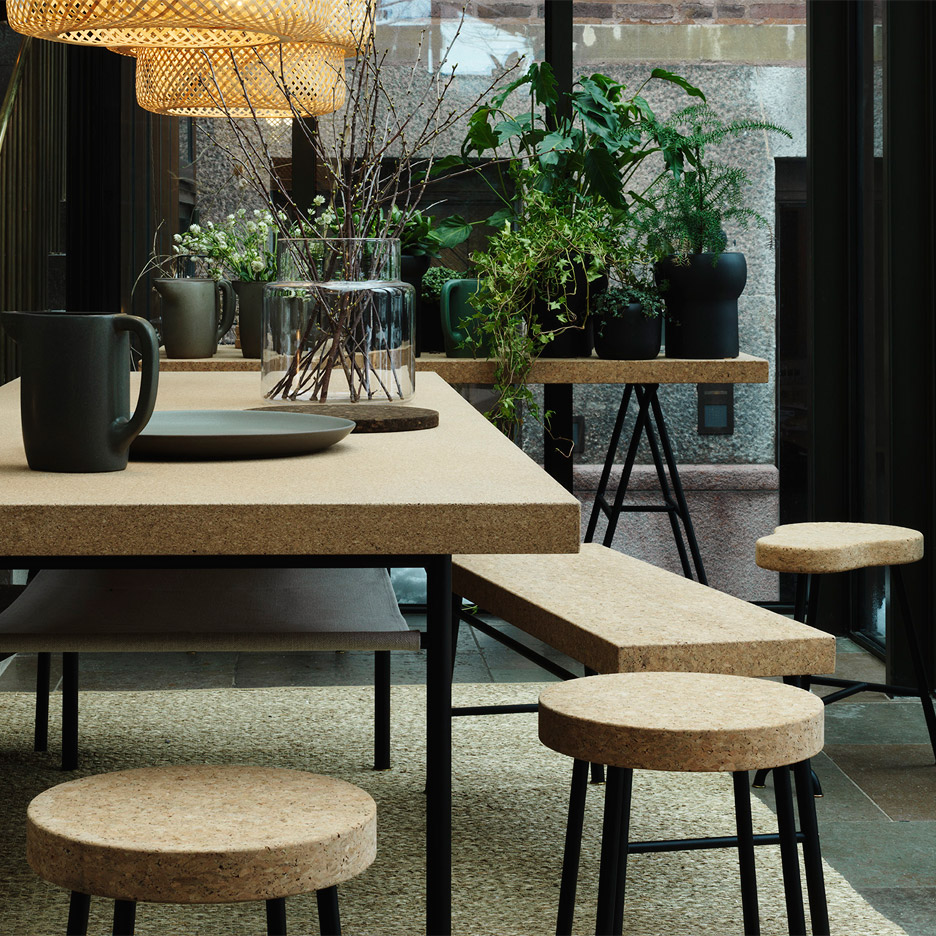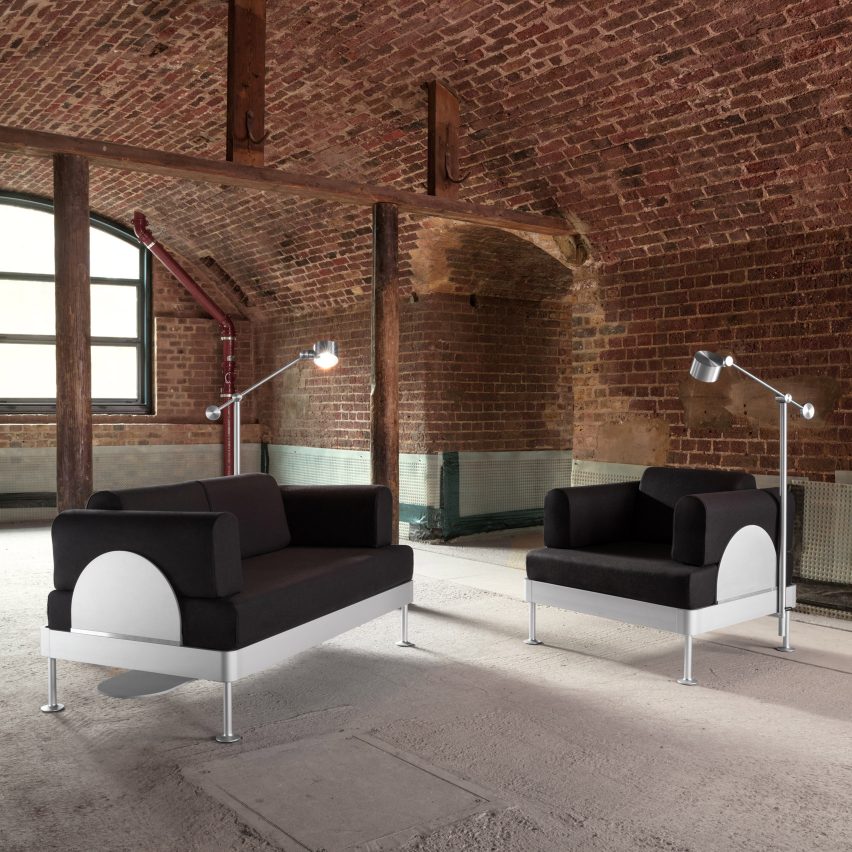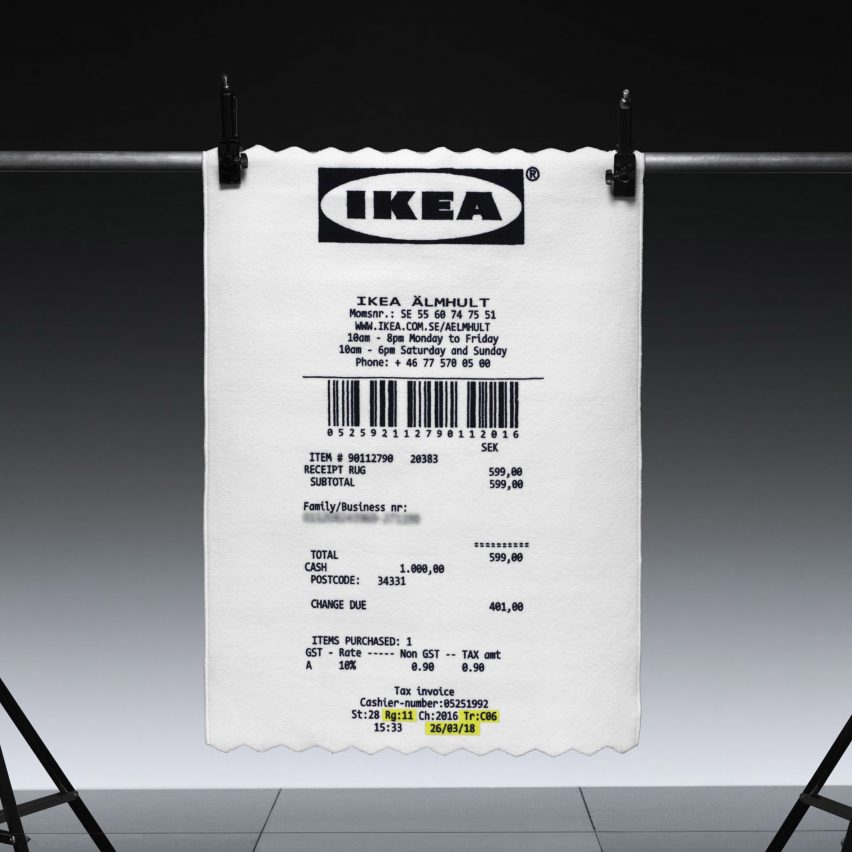
"We have done cutting-edge things that people didn't see coming" says IKEA's Marcus Engman
Marcus Engman has spent six years transforming IKEA from a flat-pack retailer into the world's most influential design brand. In the first interview since announcing his departure, he explains his approach and reveals what's next for the company.
Engman announced last week that he will leave his role as head of design at IKEA at the end of September, to set up a new design consultancy.
Since he joined the company in 2012, it has collaborated with industry-leading furniture and textile designers including Ilse Crawford, Tom Dixon and Katie Eary, and launched a range of pioneering projects, from the IKEA Festival in Milan to the Space10 innovation lab.
"We have done a lot of cutting-edge things in terms of design that people didn't see coming," Engman told Dezeen.
"It sounds silly and it's a typical thing to say, that it's more like a movement than a company, but there is a movement within IKEA. It's a great movement," he said. "I think that you're proud when you make stuff that is truly good."

Engman said the brief given to him when he first took charge was to make IKEA "a little bit more curious, a little bit more open". His strategy, he explained, was to scale up successful practices rapidly, maintaining a balance between innovation and the products that sell.
"There should be a variety of development models rather than just one. I think that's the thing, and then it's survival of the fittest," he said.
"It's not like here's those launch rockets and then there's nothing and then there's the basics," he added. "It has to go together."
Transparency is also important, he said, and was one of the key changes he implemented at IKEA. "The idea we had was: 'Let's be transparent about it. Let's share our process. Then people will see how hard it is, that it takes three years to do a small mug.'"

Engman is hugely proud of the research that goes into each product. Designers start each project by living with customers to assess their design needs. But surprisingly nearly all of the company's 200,000 employees have conducted home visits, from merchandisers to those on the till.
"When we do research we don't rely on big research companies. It's firsthand knowledge, from sending designers, product developers and engineers out to do home visits, to speak to people, live with people," said Engman.
IKEA has hinted that a direct replacement may not be recruited for Engman, possibly because he isn't completely cutting ties with the company.
"I love this company, I love IKEA, I still do and I'm still going to work with IKEA. It's just from the outside this time around," he said.

And many of the ideas he's developed, he said, won't be realised until after he has left. For instance, IKEA is planning to experiment with staggered drops for the launch of collections by fashion designer Virgil Abloh and Saint Heron, the creative team that work with Solange Knowles.
"We want to try out new ways of retailing, to meet people in different ways," he said.
"The biggest challenge is to keep the speed up of change, because that's always the challenge when you're big."
Read on for an edited version of the interview transcript:
Augusta Pownall: Why are you leaving IKEA?
Marcus Engman: Why am I leaving? You know what, I feel that I'm that kind of guy, I like to move stuff. I got tasked to move some stuff within IKEA when I started, to make us a little bit more curious, a little bit more open. And also to find ways to collaborate more with the outside world.
Augusta Pownall: When you last spoke to Dezeen you said that being more open about IKEA's processes was something you were aiming to do. Do you feel that you've achieved that as the head of design?
Marcus Engman: I don't think it's for me to say. I think that we have reached out and that's something I'm proud of, the way we've reached out to the rest of the world. And also become more curious during that time, which is important to me.
Augusta Pownall: What do you mean by curiosity and why do you think it is important?
Marcus Engman: What I like is to work with the dimensions of getting communication and design together. Because I think that they're so interlinked, if you really want to use design as a way of changing things for the better. Curiosity is one of those things that builds an interesting personality. Curious people are interested in you and not just talking about themselves. That's why curiosity is key to me.
We do 2,000 projects every year. That's a lot and all projects are unique
And also if you want to find out other ways you have to be curious all the time. I'm curious about almost everything. How does it work? I'll turn things upside down and see, ok so why did they merchandise in this way? I was really thinking about that in the stores.
Augusta Pownall: Is that something you use in the design process?
Marcus Engman: I think every team has their own freedom to do things however they want, but we invest in an exploratory phase, which is being in the unknown for a while at the beginning. Then we talk about the 'what ifs', which are so important. It depends on the different typologies. We do 2,000 projects every year. That's a lot and all projects are unique.
Augusta Pownall: You have some very interesting collaborations coming up: Virgil Abloh, Solange Knowles. These seem like unusual collaborations for IKEA. Why move into the pop culture realm?
Marcus Engman: It's not just about pop culture. I think that both Virgil and Saint Heron are in the forefront of creativity. So that's why we were interested. They've not been designing furniture, but on the other hand we've been designing furniture for 75 years, so that's what we could bring to the table because for me collaborations are always a 'give-to-get' thing. Co-branding is something completely different. When we talk about starting up something, it's 'Ok, what do you want to learn from working with IKEA?' and what would we like to learn from you. Your ways.
Augusta Pownall: How did those collaborations come about? Did you seek them out?
Marcus Engman: Actually with Virgil, it happened from a long string of events, starting off with Kanye calling and wanting to meet in Älmhult. At the time I think that Virgil was his creative director, working on some of his stuff. So it happened along the way and we met in Milan a couple of years ago, that was actually the starting point. When it comes to Saint Heron, that's been one of those things that I've been looking at them for quite a while and then we reached out and asked them if they were interested in doing something.
Augusta Pownall: What stage are you at with those collaborations?
Marcus Engman: When it comes to the Virgil Abloh collaboration, we're in the final stages and you're going to see some stuff coming out quite soon. It's going to be staggered. We're not going to do it like we've done before so there's only one batch and then its over. Now it's going to be a lot of smaller things happening in different parts of the world, because we want to try out new ways of retailing, to meet people in different ways.
Augusta Pownall: It must be quite a wrench to leave a company that's been a part of your life for such a long time?
Marcus Engman: Yeah, but I've been around now. For me, I love this company, I love IKEA, I still do and I'm still going to work with IKEA. It's just from the outside this time around. I've been there before also. I worked for 12 and a half years outside of IKEA as well, doing my own thing in my own agency. So I'm going back to that.
Augusta Pownall: Does it feel different leaving the company this time? Are you stepping out of it in order to be able to come back in?
Marcus Engman: I don't think it's so different actually. It's more like my own journey as well. Last time I left, I was working a lot with communication. This time around and during the period when I was outside, it was a lot about design and then coming in working with design again. So now it's more like, I'm enhancing my own skills in a way. So I think maybe I know a little more this time around.
Augusta Pownall: Do you feel you're leaving the design team at IKEA in good shape? Are there things you wanted to achieve that happened haven't yet?
Marcus Engman: There are always a lot of things that haven't happened yet that you want to happen, of course.
Augusta Pownall: Such as?
Marcus Engman: Let's go into the things that have happened! No, but I think the way that we work both externally and internally has become so much more open. More and more people are slowly but steadily understanding the process behind IKEA's products, which was one of my ideas from the beginning.
More and more people are slowly but steadily understanding the process behind IKEA's products
It's really hard. I guess everybody who's working with design at low cost and low prices will know how hard it is to convey the message of quality. And actually you know, the thoughtfulness which is behind it still, even at extremely low price.
The idea we had was: 'Let's be transparent about it. Let's share our process. Then people will see how hard it is, that it takes three years to do a small mug.' That's how hard it is just to achieve those prices at a quality point and be sustainable at the same time.
Augusta Pownall: How have you tried to do that? Through marketing?
Marcus Engman: Absolutely not. I'm not into marketing at all actually. I don't even believe in it. I think it's not about marketing, it's about sharing, which is something else. We've done this to share what we do. The ones that are interested, they're going to follow up. And then there will be followers of the ones that are interested, and so on. That's not really marketing, it's more like communication I would say.
Augusta Pownall: Last year IKEA topped Dezeen Hot List. What's the secret? Why are people so interested in IKEA?
Marcus Engman: I'm proud of that. Openness is one part of it. I think that it's also that we are genuinely interested in people, and people's lives and we go out to meet people firsthand also. That's something which is quite different from others. When we do research we don't rely on big research companies. It's firsthand knowledge, from sending designers, product developers and engineers out to do home visits, to speak to people, live with people.
Actually if you work in an IKEA store, there are 200,000 employees and most people have done home visits, because if you work in the store it's really important to know your local area and how people live there. Our room sets and so on resemble the local area in terms of sizing and how they're set up.
If you work in product development, it's important to have a fair understanding of how people use our products and the differences around the world in usage and what's important to them, and emotional bonds to things that you might not get if you just get a research company to ask, or prompt someone. I think it's so different those one-to-one chats, that you get things out there.
Augusta Pownall: I read that your day is a constant stream of meetings in half hour slots. Have you found your job as head of design to be creative?
Marcus Engman: Yeah, absolutely. I'm quite fast. I adapt to situations quite fast. You have to when you have that kind of work. I like being thrown into different lines of thinking, to challenge those. I don't have a problem with that, that's how I work as a person. What I'm longing for and one of the reasons I'm leaving IKEA is actually to do some creative work myself. I don't use my pen, I don't do the stuff anymore. I talk to people and try to inspire people to go in certain directions. I work with visions rather than products. So the biggest step for me is to go a little bit backwards. I asked myself what am I looking forward to doing, and that would be to create for myself a little bit.
I'm interested to maybe try applying the line of thinking at IKEA to other typologies and businesses>
I'm interested to maybe try applying the line of thinking at IKEA to other typologies and businesses. I'm interested to see if this line of work at IKEA would be possible to achieve in other businesses. Could you work with design in such a way, interlinked with communication in that way for other types of business? That's something I would like personally to explore for the future. I'm not going back to the same company as I had before, I'm starting up a new one. You'll see it from the 1 October, it's called Skewed Productions. So have a look for that.
Augusta Pownall: You previously said to Dezeen that you thought that if companies get too big they can lose they agility and their ability to react and move quickly. Is that a problem for IKEA?
Marcus Engman: It's always been a problem if you're a company with more than 200,000 employees, to get everyone on board with things. I think that one of the things that's a good part with IKEA is that you can be a contender. It's ok to challenge things within the system also, and to get away with it. IKEA is a company of entrepreneurs, from the beginning. Even though it's so big, there are a lot of entrepreneurs in the history of IKEA, inside the company, trying out a lot of crazy things. Number one is that it's ok to make mistakes, and to embrace those mistakes.
Augusta Pownall: What mistakes have you made in the last six years?
Marcus Engman: Actually, we have done a lot of cutting-edge things in terms of design that people didn't see coming. In terms of how to bring that in to the running business, the long-term business, that is something I wish I could have done better to be honest, so we would benefit more from it long-term, both technology-wise but also finding new typologies of customers and to stick to them, but also what's next, coming after this. So it's more like becoming normal, so it's not like here's those launch rockets and then there's nothing and then there's the basics. It has to go together. I think we've found a way there but it will happen after I've actually left. That's not disappointing whatsoever though, I think it's good.
Augusta Pownall: How important is sustainability to a company like IKEA? Do you think you have a responsibility to champion on this?
Marcus Engman: Yeah, I think it's a gigantic responsibility. It's one of those things you can't shy away from thinking about. It's one of the pillars of democratic design at IKEA, we talk about five things and one of them is responsibility.
We have decided to go 100 per cent circular for 2030, which means that we need to change all of our values and set up, so that recyclable or recycled materials are everything. It's a major shift, and requires a lot of people working hard. You have to rethink it completely from the bottom up, and also new design principles for how to do that.
It was a joint decision for all of the company. It goes all the way to the top because it's also a big business decision. For us it's also a matter of survival, first and foremost it's about being sustainable, planet positive, but it's also a business decision because if you want to be low price like we are, because we want to be for a lot of people, then you can't avoid going fully circular because the scarcity of resources will drive the raw material prices up. And that will mean that it's going to be really hard to be a low-priced company, so for us it makes perfect business sense. That's what it's been like from the past within IKEA, working with sustainability, it's so closely connected to waste, being sustainable as a starting point. We at IKEA have always hated waste, because waste is one of the things that creates high prices, so we've done everything to get rid of waste, and thereby we've been quite sustainable, maybe even before we knew it.
Augusta Pownall: The company keeps growing and moving into new territories. When will IKEA reach its limit?
Marcus Engman: We have one billion customers in our stores, but that doesn't mean that we reach one billion people. We reach far less than that because they come to our stores more than once a year, so there's still a major possibility to reach more of the population of the world than we are currently. There are so many areas of the world where we're not present still. I think you're going to see IKEA growing more.
Augusta Pownall: What's the biggest challenge now for IKEA?
Marcus Engman: The biggest challenge is to keep the speed up of change, because that's always the challenge when you're big. How can you be speedy enough, take decisions fast enough and be at the forefront of things? Which is better than just being a follower, and that's a constant challenge for a big company like us. There should be a variety of development models rather than just one. I think that's the thing, and then it's survival of the fittest. See what works and if it works, expand it really fast instead of just relying on one way of doing stuff.
Augusta Pownall: Why has nobody in the home furnishing market managed to match IKEA?
Marcus Engman: That's a really interesting question actually. I think it's the policy that we have, and a lot of people just say that, but we are actually a vision-driven company. There's a lot of people who choose to work at IKEA due to the fact that you're making a change and you feel like you're making a change. Thereby we do great business, instead of starting off with the business part.
There's a lot of people who choose to work at IKEA due to the fact that you're making a change and you feel like you're making a change
It sounds silly and it's a typical thing to say, that it's more like a movement than a company, but there is a movement within IKEA. It's a great movement. Not everyone feels that, but there's still a lot of people who do. It also goes back and forth within IKEA at different times. I think that you're proud when you make stuff that is truly good. Then everyone is really proud. We had our own Democratic Design Awards last week at IKEA, and there were like 1,000 people gathered in our head office applauding the news of what's coming up, and people talking about it and what customers had said about it, and you can feel that pride. We call it democratic design, an internal design awards for our products, within the company.
Augusta Pownall: How would you define democratic design?
Marcus Engman: For me it's one of those things that I've put a lot of hours into, coming into IKEA again, and that's to find a common language for speaking about design. I think that's a problem within big companies, or any company. There's the ones in the know and then there's the others. I don't think it should be like that actually, for just the chosen few. It should be for everyone if you want to make big changes. To have a way of actually talking about products or development that is a common way for everyone, no matter if you're an engineer or a visual merchandiser or a spreadsheet person, you should talk about it in the same way. I think language is the major thing. It's one of the things we don't talk about so much. And it contains the five different pillars that everything should be; great form, making the world more beautiful, function for everyday life because we focus on the everyday, quality – it should be done in a way that is long-lasting.
Nowadays we talk about ageing gracefully, finding the right materials and surface treatments, and planning in a sustainable way, and also what I talk about a lot and try to inspire people is to design for nudging people's behaviour into more sustainable behaviour. We could be even better, we're struggling, or not struggling but working on improving ourselves to be a more sustainable company, but still we're 200,000 people, which is a big company, but it's not big in terms of the world. But we also have one billion customers, if we could change those people's behaviours into more sustainable everyday behaviour, it's absolutely possible in the way that we design things.
We design water carafes that are so good that people actually chose to filter their water instead and have that on an everyday level, because it works better than going off to the supermarket for water. Meanwhile we have taps that we design that are less than 50 per cent water usage compared with a normal tap. Those things are designing for better behaviour. People don't even know that they are behaving better. Those are two obvious ones, but there are lots of small ones taking that into consideration.